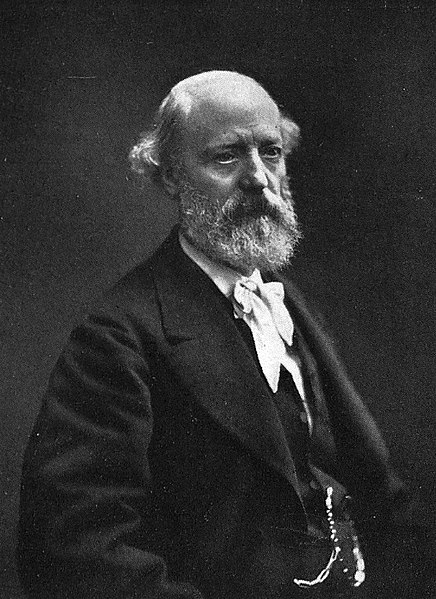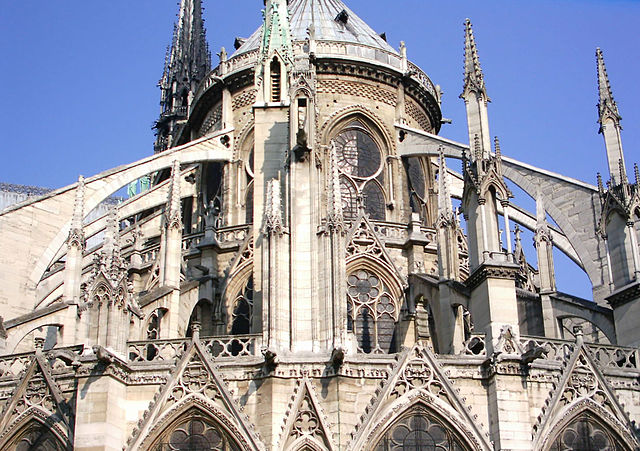Eugène Emmanuel Viollet-le-Duc was a French architect and author, famous for his restoration of the most prominent medieval landmarks in France. His major restoration projects included Notre-Dame de Paris, the Basilica of Saint Denis, Mont Saint-Michel, Sainte-Chapelle, the medieval walls of the city of Carcassonne, and Roquetaillade castle in the Bordeaux region.
Photograph by Nadar
Women's Banquet at the Tuileries painted by Viollet-le-Duc (1835)
Vézelay Abbey, Viollet-le-Duc's first restoration project
Facade about 1841, pre-restoration
Notre-Dame de Paris, referred to simply as Notre-Dame, is a medieval Catholic cathedral on the Île de la Cité, in the 4th arrondissement of Paris, France. The cathedral, dedicated to the Virgin Mary, is considered one of the finest examples of French Gothic architecture. Several attributes set it apart from the earlier Romanesque style, particularly its pioneering use of the rib vault and flying buttress, its enormous and colourful rose windows, and the naturalism and abundance of its sculptural decoration. Notre-Dame also stands out for its three pipe organs and its immense church bells.
South façade and the nave of Notre-Dame in 2017, two years before the fire
Early six-part rib vaults of the nave. The ribs transferred the thrust of the weight of the roof downward and outwards to the pillars and the supporting buttresses.
The massive buttresses which counter the outward thrust from the rib vaults of the nave. The weight of the building-shaped pinnacles helps keep the line of thrust safely within the buttresses.
Later flying buttresses of the apse of Notre-Dame (14th century) reached 15 metres (49 ft) from the wall to the counter-supports.








